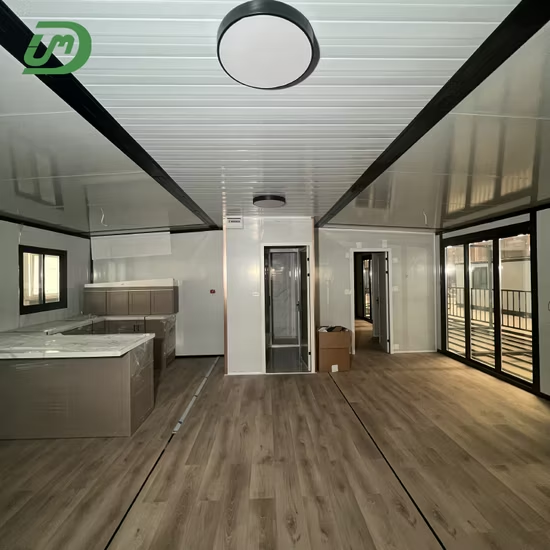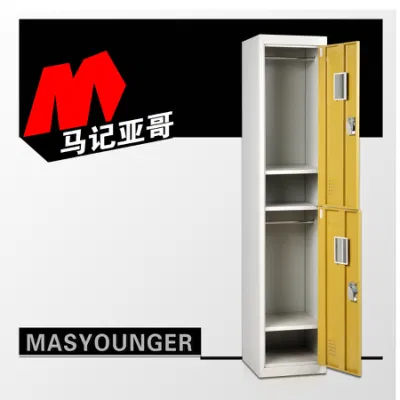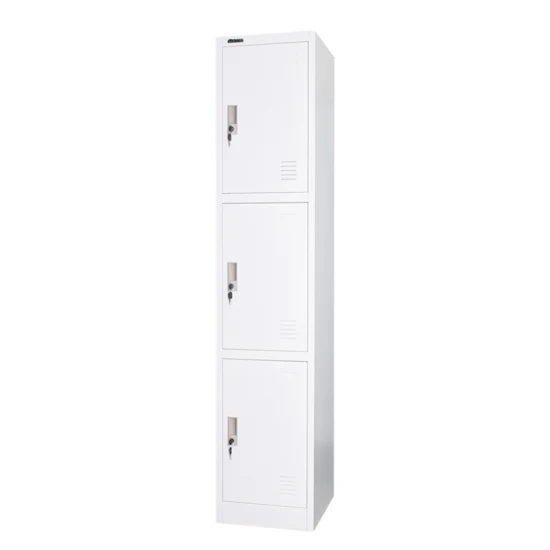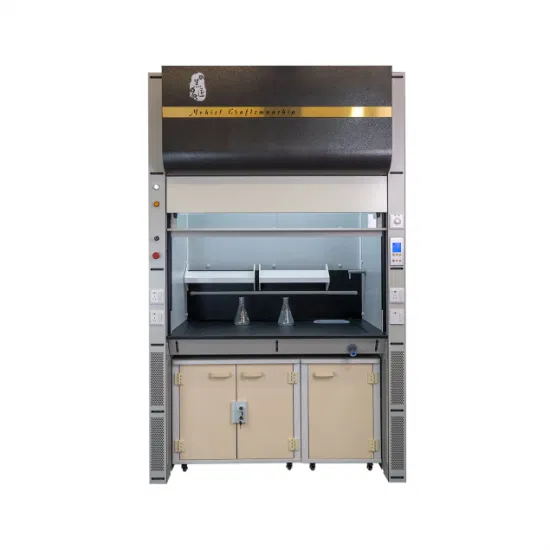
Acid & Alkali Resistant Fireproof Chemical Laboratory Ductless Bench
Description
Basic Info.
| Model NO. | WJ-DM1600 |
| Feature | Corrosion Resistance, Heat Resistant, Acid & Alkali Resistant, Fireproof, Explosion Proof |
| Hood Type | Standard |
| Color | Grey |
| Customized | Customized |
| Condition | New |
| Input Power | 110V-240V |
| Filter | 370*395*50mm |
| Application | Environment/Institute/Biology Lab/Chemical Lab |
| Face Velocity | 0.4-0.6 M/S |
| Liner Material | Ceramic Fiber Board |
| Sash | Tempered Glass |
| Worktop | 20+6 mm Ceramic |
| Product Name | Ductless Fume Hood |
| Transport Package | Standard Export Wooden Case Packing |
| Specification | 1600*620*1245 MM |
| Trademark | Ample |
| Origin | Chengdu, China |
| HS Code | 8414809090 |
| Production Capacity | 200 Set/Month |
Packaging & Delivery
Package Size 1900.00cm * 900.00cm * 2100.00cm Package Gross Weight 360.000kgProduct Description
Product Description
Fume hoods should provide a safe and functional workstation for laboratory workers, and are often purchased with vented, flammable, or corrosive storage base cabinetry. Flammable (flash point < 100 °F) and combustible chemicals (flash point >100 °F) impose a fire hazard when stored/used improperly. The most common fume hood safety hazards that arise in laboratories stem from cluttered workstations, improper chemical storage, chemical fume hood incompatibility, and failure to check the hood flow indicator to make sure that it is working properly before starting work.
When choosing a ducted or ductless system, it is important to get all of the necessary components to maintain good lab practices. Cabinets are available for regular, solvent (flammable and combustible), and corrosive (acids or bases) storage. Some cabinets are designed without a bottom for easy access to equipment that can be rolled into and out of the cabinet. If storage is not necessary, simple base stands or carts (for portable hoods) are available to elevate and support the hood and work surface.
Work surfaces vary in composition, abrasion, chemical, and heat resistance. Solid epoxy resin work surfaces provide the highest-level resistance, allowing users to perform tasks with high concentrations of solvents, acids, and bases. Solid phenolic resin stations are intended for high chemical resistance, but are not as hard and durable as epoxy stations. Stations made of composite resin provide the least amount of chemical resistance and are intended for general use only. Stainless steel work surfaces are also available for perchloric acid and radioisotope fume hoods, both of which require ducted exhaust.
All work surfaces can be purchased with or without spill containment for extra protection, and with cutouts for cup or trough sinks. However, the more plumbing that a hood requires, the less feasible portability becomes. Sinks would likely be plumbed to acid waste systems, and if gas, compressed air, N2, or vacuum turrets are necessary, then disconnecting and reconnecting the unit to move it becomes more of a bother.
| ModelParameters | YT-1500A | YT-1500B | YT-1500C | YT-1800A | YT-1800B | YT-1800C |
| Size (mm) | 1500(W)*865(D)*2400(H) | 1800(W)*1205(D)*2400(H) | ||||
| Worktop Size (mm) | 1260(W1)*795(D1)*1100(H1) | 1560(W1)*795(D1)*1100(H1) | ||||
| Worktop | 20+6mm Ceramic | 20+6mm Ceramic | 12.7mm Solid Physiochemical Board | 20+6mm Ceramic | 20+6mm Ceramic | 12.7mm Solid Physiochemical Board |
| Liner | 5mm Ceramic Fibre | 5mm Compact Laminate | 5mm Compact Laminate | 5mm Ceramic Fibre | 5mm Compact Laminate | 5mm Compact Laminate |
| Diversion Structure | Back Absorption | |||||
| Control System | Touch-Tone Control Panel (LED Screen) | |||||
| Input Power | 220V/32A | |||||
| Fan Power | Less than 2.8 A | |||||
| Socket Max. Load | 5KW | |||||
| Faucet | 1 Set | |||||
| Drainage Mode | Natural Fall | |||||
| Storage | Double-Lock, Corrosion-Resistant, Damp-proof, Multi-layer Solid Wood with Mobile Wheel | |||||
| Application | Indoor No-blast, 0-40 ºC | |||||
| Application Field | Organic Chemical Experiment | |||||
| Face Velocity Control | Manual Control | |||||
| Average Face Velocity | 0.3-0.5 m/s Exhaust: 720-1200m³/h | 0.3-0.5 m/s Exhaust:900- 1490m³/h | ||||
| Face Velocity Deviation | Less than 10% | |||||
| Average Illumination | Less than 500 Lux | |||||
| Noise | Within 55 dB | |||||
| Exhaust Air | No Residue | |||||
| Safety Test | In Accord with International Standard | |||||
| Resistance | Less than 70Pa | |||||
| Add Air Function | Distinctive Structure (Need Exclusive Add Air System) | |||||
| Air Flow Control Valve | Dia. 250mm Flange Type Anti-Corrosion Control Valve | Dia. 315mm Flange Type Anti-Corrosion Control Valve | ||||
Ductless fume hoods provide a cost-effective and environmentally friendly alternative to traditional ducted fume hoods, but not all chemicals are appropriate to use in ductless systems. Since ductless hood filters have different affinities and adsorption rates for various chemicals, these hoods are fairly chemical-specific, depending on the filters employed, and are not optimal for applications involving high evaporation, viruses, bacteria, trace metals, perchloric acid, acid digestions, and radioisotopes. It is important to realize that chemicals trapped in the filter and vapors entering the filter may react and alter filter breakthrough and retention.
Perchloric, picric, and nitric acids are particularly dangerous, especially at higher temperatures, and should be used with extra precaution in ducted, stainless steel hoods. Perchloric (an oxidizing inorganic) and picric (an organic) acids require special handling altogether because they are very strong oxidizers at high temperatures, reacting with metals, wood, and other combustibles to form explosive compounds. Picric acid is also potentially dangerous when dry or contaminated because picrate metal salts are potentially explosive compounds. Organic solvents, sulfuric acid, and acetic acid should never be used in a perchloric acid hood. Acid digestion fume hoods provide a safe environment for heavy use of acids (other than perchloric and picric) at high temperatures.
What Is a Fume Hood?
A fume hood is a piece of laboratory equipment designed to minimize a person's exposure to hazardous chemicals. The fume hood draws away harmful vapors so lab employees can work with chemicals without the risk of accidental exposure. The air is extracted from the fume hood and filtered to remove dangerous vapors, and then either exhausted outside of the building or recirculated back into the lab.
How Does a Fume Hood Work?
The fume hood works by using a sash (a window that opens or closes to protect the user) to contain the vapor and keep it away from the user's face or to prevent it from drifting out into the rest of the laboratory. Blowers draw in air from the room, through a filter or number of filters within the fume hood and towards an exhaust area.
To safely work in a fume hood, keep all work at least six inches away from the plane of the sash. This will ensure fumes are pulled away from the user. Also, make sure the hood sash remains closed as much as possible and keep the hood slots and baffles free of any obstructions by containers or equipment. Never place your head inside the fume hood when working with chemicals.
The airflow will differ depending on the type of hood you use. For a constant air volume (CAV) hood, the fan has only one speed, providing a stable and continuous airflow. A variable air volume (VAV) hood allows users to adjust the velocity of the exhaust for added versatility, while reduced air volume (RAV) hoods offer lower airflow performance, making them ideal for working with less harmful compounds.
It's the air being sucked through the fume hood, not the fume hood itself that consumes so much energy. For health and safety reasons, labs use 100% outside air which must be heated or cooled for comfort before it is brought into the lab. In addition to the energy required to condition the air, a significant amount of additional electricity is required to run large fans to move the air through the building and through the fume hoods.
How does shutting the sash save energy?
Most fume hoods at Stanford are variable air volume (VAV), meaning that the fume hoods are designed to vary the air flow based on how wide open the sash height is. Sash position is connected to the building's ventilation system so that a building's fan speed and the volume of air moved is reduced when the sash is lowered.
Is it safe to shut the sash?
The sash is an important safety barrier between the fume hood interior and the laboratory, protecting the lab user. Sashes should be opened only to set up or modify an experiment. At all other times, shutting the sash is safest. When the sash is shut there is still some air flow through the hood to remove any fumes.
How do I remind myself and my roommates to close the sash?
You can post a sticker, like the one shown in the picture below, to remind yourself and your lab mates to close the sash when not in use. The sticker also educates new fume hood users tha a lower sash is safer, and that the sash should only be open when setting up and modifying experiments. Project Cases
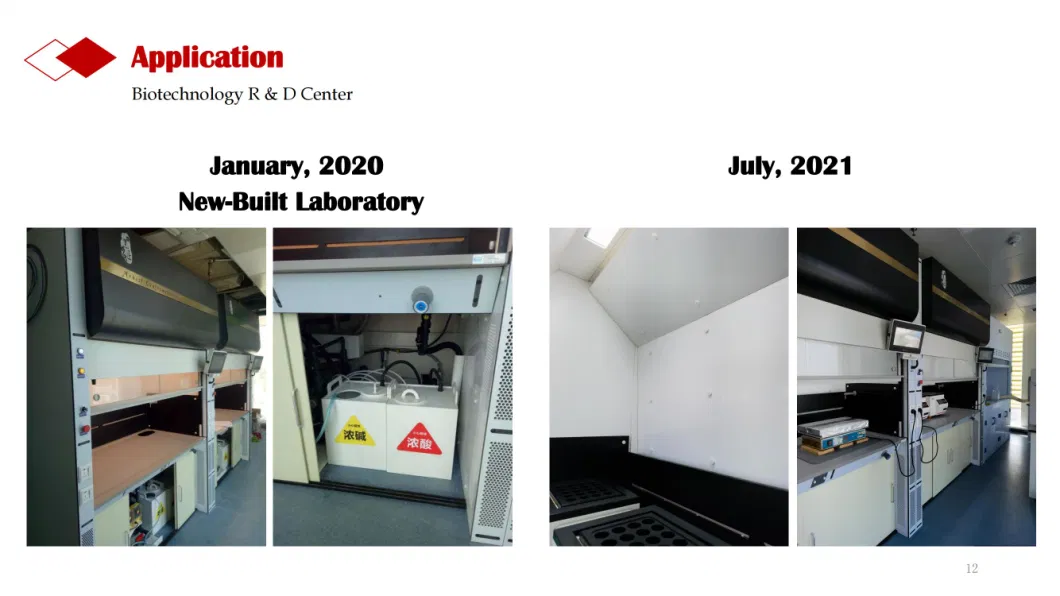
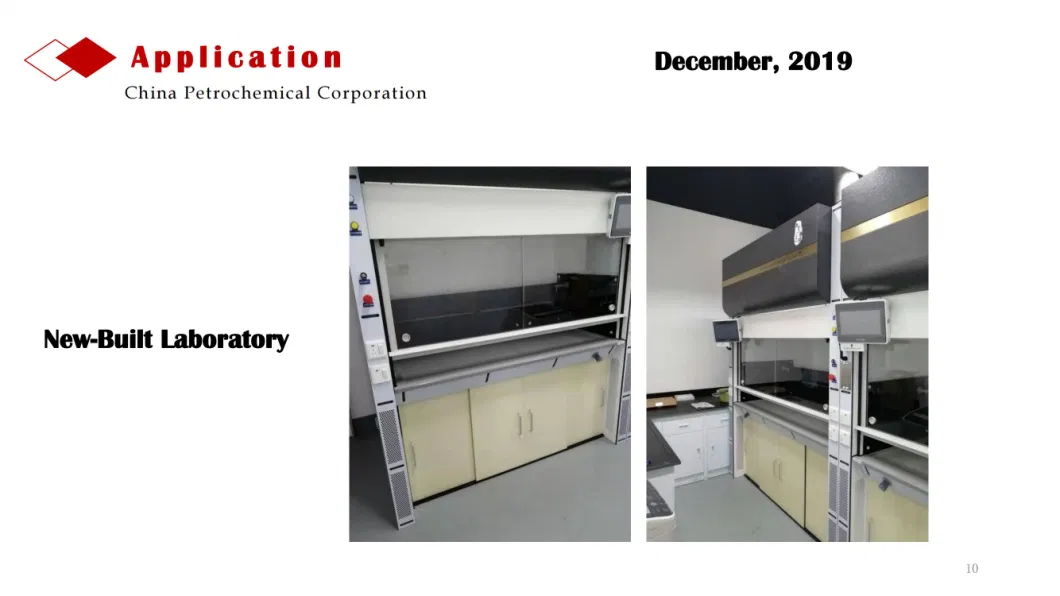
Prev: Laboratory Furniture Fume Hood SS304 Chemical Equipment Ductless Fume Hood
Next: Biobase China Factory Laboratory Xw006 Accessories Equipmentsfor Vortex Mixer
Our Contact


